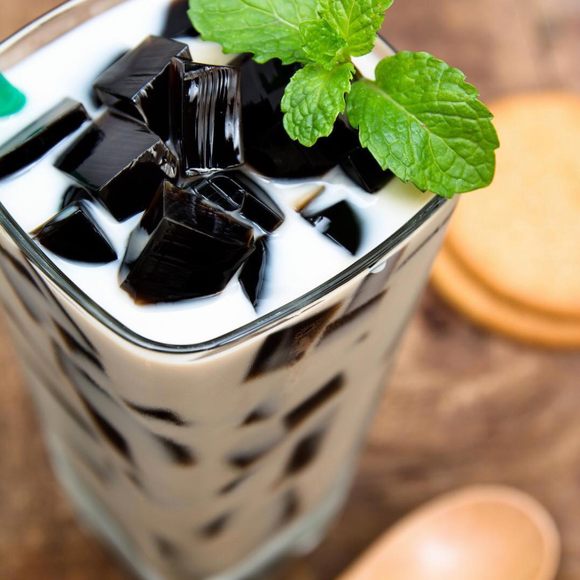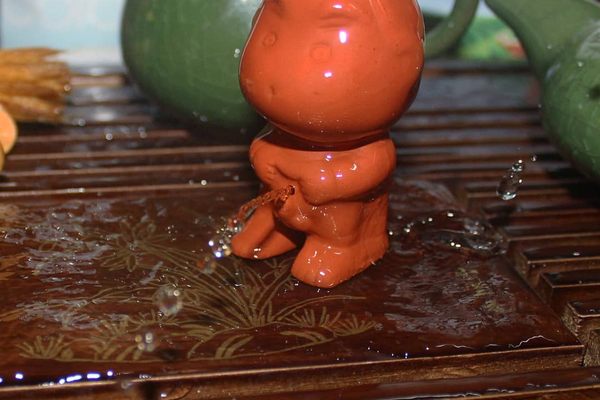Ingredients & Condiments
Grass Jelly
Once a treatment for heat stroke, the herbal gel now flavors desserts.
Every spring, Chinese farmers harvest a mint-family plant called Platostoma palustre. They leave it to dry and oxidize beneath the sun, much like tea leaves. After boiling the plant into a thick, dark decoction—a process that takes several hours—they stir in starch, morphing the ominous pool into a substance known as grass jelly.
The Hakka, an ethnic group of the Han Chinese, historically used this cooling, hydrating gel to alleviate heat stroke after long days working in the field. However, making this traditional food is a time-consuming art. In recent years, mass-produced canned and powdered versions have sprung up in stores, but connoisseurs consider these to be bland imitations of the real deal. Instead, the fresh, wobbly treat should be tart and fragrant, with a hint of mint. It gives easily under a knife, but possesses a chewy, thick quality.
Today, grass jelly remains popular—though less essential—as a refresher in Hong Kong, Southern China, and Taiwan. Market vendors dole out individual servings by slicing off pieces of one giant, gelatinous block. And while the jelly isn’t sweet on its own, sellers often prepare it with preserved roots and starches, like taro and boba, all doused in sugary syrup. Around Southeast Asia, you’ll find the chilled cubes in Thai iced tea and other sweet, cold drinks. These modern preparations still offer a viable way to alleviate heat stroke, but the impending sugar crash is a new addition to the once simple, restorative snack.
Where to Try It
-
Blackball Taiwanese Dessert
250 W Valley Blvd , San Gabriel, California, 91776, United StatesThis cafe chain from Taiwan serves dessert bowls that use grass jelly, as well as boba, taro, sweet potato, and red bean.
Written By
 rachelrummel
rachelrummel
Sources
- munchies.vice.com/en_us/article/kbkky9/sweet-black-grass-jelly-shouldnt-come-out-of-a-can
- www.chinasichuanfood.com/grass-jelly-cincau/
- www.dinnerpartydownload.org/grass-jelly/
- www.wisegeek.com/what-is-grass-jelly.htm
- www.laweekly.com/restaurants/meet-fresh-brings-its-grass-jelly-desserts-to-the-san-gabriel-valley-8038728
- npgsweb.ars-grin.gov/gringlobal/taxonomydetail.aspx?id=461300
- www.sciencedirect.com/science/article/pii/S2212670812000917


















